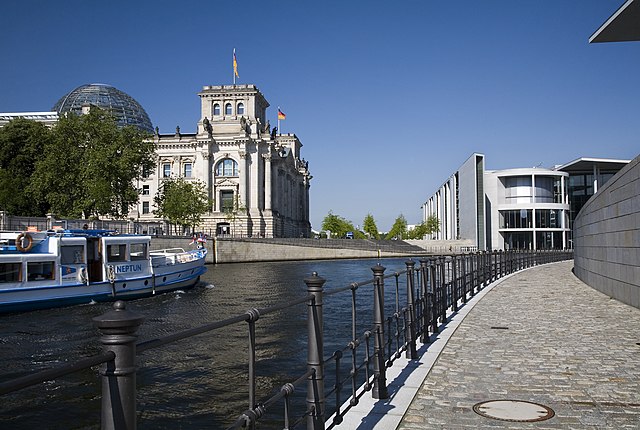The Oberbaum Bridge is a double-deck bridge crossing Berlin, Germany's River Spree, considered one of the city's landmarks. It links Friedrichshain and Kreuzberg, former boroughs that were divided by the Berlin Wall, and has become an important symbol of Berlin's unity.
An U-Bahn train crosses the Oberbaum Bridge
Oberbaum Bridge connecting the districts of Kreuzberg and Friedrichshain, Berlin TV Tower in the background
The towers were based on the Brick Gothic Mitteltorturm in Prenzlau
East German checkpoint at the Oberbaum Bridge, 1961.
The Spree is, with a length of approximately 400 kilometres (250 mi), the main tributary of the River Havel. The Spree is much longer than the Havel, which it flows into at Berlin-Spandau; the Havel then flows into the Elbe at Havelberg. The river rises in the Lusatian Highlands, that are part of the Sudetes, in the Lusatian part of Saxony, where it has three sources: the historical one called Spreeborn in the village of Spreedorf, the water-richest one in Neugersdorf, and the highest elevated one in Eibau. The Spree then flows northwards through Upper and Lower Lusatia, where it crosses the border between Saxony and Brandenburg. After passing through Cottbus, it forms the Spree Forest, a large inland delta and biosphere reserve. It then flows through Lake Schwielochsee before entering Berlin, as Müggelspree (pronounced [ˈmʏɡl̩ˌʃpʁeː] ).
The Spree in Berlin, Reichstag building to the left
Spree in Bautzen
Spree north of Bautzen
Spree in the Spreewald








